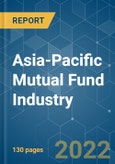In Asia, fund distribution is still highly fragmented, with no single route dominating every area. Retail banks dominate the sale of fund products in Hong Kong and China, whereas securities firms dominate the market in Korea.
A number of B2B robo advisers and ones aimed towards the middle-class market are already making inroads in a number of APAC markets and tie-ups with asset managers and banking distribution platforms are taking place.
Given the growing potential of this region, many countries are bringing in regulations to streamline the industry with free flow of funds among countries and also to curb unwarranted results. Japan’s Financial Services Authority released finalized principles regarding fiduciary duty, setting out seven overarching principles that will aid the economy in pursuing sustainable economic growth and the stable financial accumulation of Japanese household assets. In India, regulations of mutual fund mergers have been tightened to improve transparency and eliminate product ambiguity for investors. Similarly, a new regulatory framework in China will enhance market surveillance and transparency.
Key Market Trends
Rising inflation will create opportunities
The first major trend is the impact of growing inflation on the Asia-Pacific private equity market. Because of low interest rates, many businesses have taken on excessive debt in recent years.As interest rates rise, some of these businesses may become troubled and require recapitalization. This opens the door for private equity to step in.
Rising interest rates will have an impact on private equity's sector concentration. Investing in high-growth IT companies with extremely high valuations has been a trend in recent years. The companies anticipates a shift away from high-growth companies with shaky balance sheets and toward sectors and companies with strong profitability and pricing power - factors that help businesses survive inflation.
Mutual Funds As a Savings Priority in the region
The emerging affluent are lighting a fire under economic growth in some of the world’s most dynamic markets. The emerging affluents are active savers and the savings proportion to their top priority is increasing over the years across countries in this region. From relying on basic savings accounts or time deposits, the proportion of affluents choosing mutual funds over others as their primary saving method are increasing over the years. The infographic shows the share of population considering mutual funds as a saving method in the region is presented below.
Competitive Landscape
The report includes an overview of MF companies operating across Asia-Pacific. We wish to present detailed profiling of a few major companies which cover product offerings, regulations governing them, their headquarters, and financial performance. Currently, some of the major players dominating the market are listed below.
Additional Benefits:
- The market estimate (ME) sheet in Excel format
- 3 months of analyst support
This product will be delivered within 2 business days.
Table of Contents
Companies Mentioned (Partial List)
A selection of companies mentioned in this report includes, but is not limited to:
- E fund Management
- Bosera Asset management
- HDFC Mutual Fund
- ICICI Prudential Mutual Fund
- T. Rowe Price
- BlackRock
- Goldman Sachs
- Matthews Asia Funds
- Fidelity Investments
- Invesco*








